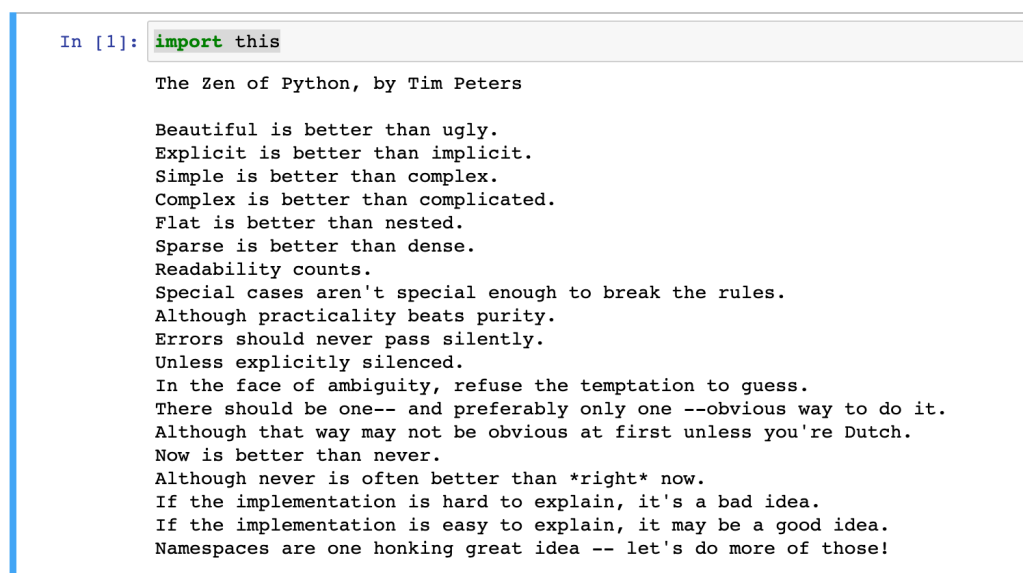
Archive for the ‘Uncategorized’ Category
What is Always Free- Oracle OCI.
Posted by Sriram Sanka on October 14, 2023
Posted in Uncategorized | Leave a Comment »
Just WoW !!
Posted by Sriram Sanka on September 20, 2023
Posted in Uncategorized | Leave a Comment »
Oracle Offers Free Training and Certification Program as Demand for Cloud and AI Accelerates.
Posted by Sriram Sanka on August 31, 2023
Oracle has extended the Race to Certification Challenge: Free Certifications for OCI until September 30, 2023
Unleash your potential by certifying on Oracle Cloud Infrastructure, free until September 30, 2023:
- Acquire key, in-demand skills in Cloud Computing, Security, AI/ML, DevOps, Autonomous Databases, and more.
- Learn concepts through simple, structured learning paths designed by Oracle expert instructors and by leveraging our learning community.
- Choose from 21 core certification courses covering Oracle Cloud Infrastructure.
How do I get started?
- Visit OCI Certification Promotion page and select your certification learning path.
- Sign in to Oracle MyLearn using an Oracle SSO account. If you don’t have an Oracle SSO account, create one when you access one of the learning paths below.
- Join the Race to Certification Challenge.
- Prepare for your certification exam by leveraging the learning path content, attending a live instructor-led event, or asking a question in our learning community
- Share your certification success on social Media: #OracleCertified
Certification Learning Paths
- OCI 2023 Foundations
- OCI 2023 Architect Associate
- OCI 2023 Multicloud Architect Associate
- OCI 2023 Security Professional
- OCI 2023 Developer Professional
- OCI 2023 DevOps Professional
- OCI 2023 Cloud Operations Professional
- OCI 2023 Data Science Professional
- OCI 2023 Observability Professional
- OCI 2023 Application Integration Professional
- OCI 2023 Digital Assistant Professional
- Oracle Cloud Data Management 2023 Foundations
- Oracle Autonomous Database Cloud 2023 Professional
- Oracle Cloud Database 2023 Migration and Integration Professional
- Oracle Base Database Services 2023 Professional
- Oracle Machine Learning using Autonomous Database 2023 Associate
For more details, visit Free Certification for OCI.
Posted in Uncategorized | Leave a Comment »
Query for Top 10 by Version Count:
Posted by Sriram Sanka on September 13, 2022
set linesize 100
set pagesize 100
SELECT * FROM
(SELECT substr(sql_text,1,40) sql,
version_count, executions, hash_value,address
FROM V$SQLAREA
WHERE version_count > 20
ORDER BY version_count DESC)
WHERE rownum <=10
;
Posted in Uncategorized | Leave a Comment »
Query for Top 10 by Sharable Memory:
Posted by Sriram Sanka on September 13, 2022
set linesize 100
set pagesize 100
SELECT * FROM
(SELECT substr(sql_text,1,40) sql,
sharable_mem, executions, hash_value,address
FROM V$SQLAREA
WHERE sharable_mem > 1048576
ORDER BY sharable_mem DESC)
WHERE rownum <=10
;
Posted in Uncategorized | Leave a Comment »
Query for the Top 10 by Parse Calls:
Posted by Sriram Sanka on September 13, 2022
set linesize 100
set pagesize 100
SELECT * FROM
(SELECT substr(sql_text,1,40) sql,
parse_calls, executions, hash_value,address
FROM V$SQLAREA
WHERE parse_calls > 1000
ORDER BY parse_calls DESC)
WHERE rownum <=10
;
Posted in Uncategorized | Leave a Comment »
Date Difference(datediff) Using Oracle SQL – By Thomas Kyte(ASKTOM)
Posted by Sriram Sanka on September 11, 2022
Its an Old Good Script from my Script Collection to find the number of minutes/Seconds/Hours between two dates- Original Author – TomKyte.

create or replace function datediff( p_what in varchar2,
p_d1 in date,
p_d2 in date ) return number
as
l_result number;
begin
select (p_d2-p_d1) *
decode( upper(p_what),
'SS', 24*60*60, 'MI', 24*60, 'HH', 24, NULL )
into l_result from dual;
return l_result;
end;
/
WITH data
AS (SELECT To_date(SYSDATE - 2, 'dd-mon-yyyy hh24:mi:ss') d1,
To_date(SYSDATE, 'dd-mon-yyyy hh24:mi:ss') d2
FROM dual)
SELECT Datediff('ss', d1, d2) AS seconds,
Datediff('mi', d1, d2) AS minutes,
Datediff('hh', d1, d2) hours
FROM data
SQL> WITH data
2 AS (SELECT To_date(SYSDATE - 2, 'dd-mon-yyyy hh24:mi:ss') d1,
3 To_date(SYSDATE, 'dd-mon-yyyy hh24:mi:ss') d2
4 FROM dual)
5 SELECT Datediff('ss', d1, d2) AS seconds,
6 Datediff('mi', d1, d2) AS minutes,
7 Datediff('hh', d1, d2) hours
8 FROM data ;
SECONDS MINUTES HOURS
---------- ---------- ----------
172800 2880 48
SQL>
Posted in Functions In oracle, Uncategorized | Tagged: datediff, function, oracle, sql | Leave a Comment »
[FATAL] [DBT-06103] The port (5,500) is already in use.
Posted by Sriram Sanka on May 12, 2022
If you get this Port already in use Error While Installing Oracle in Linux., Make sure to have Proper Host Name Configured and Entry in /etc/hosts file.

Posted in Uncategorized | Leave a Comment »
Few More Additions to the List
Posted by Sriram Sanka on December 27, 2021
Posted in Uncategorized | Leave a Comment »
AWS- EC2 : Error while changing the IP Address in EC2 Security Groups
Posted by Sriram Sanka on June 12, 2021
Error while changing the IP Address in EC2 Security Groups. This happened ,as the user does not have access to change the IP in SG Group 2,after adding the below rule (Underlined Part) resolved this error.

{
"Version": "2012-10-17",
"Statement": [
{
"Sid": "VisualEditor0",
"Effect": "Allow",
"Action": [
"ec2:RevokeSecurityGroupIngress",
"ec2:AuthorizeSecurityGroupEgress",
"ec2:AuthorizeSecurityGroupIngress",
"ec2:RevokeSecurityGroupEgress",
"ec2:DeleteSecurityGroup"
],
"Resource": [
"arn:aws:ec2:::security-group/sg-Group1",
"arn:aws:ec2:::security-group/sg-Group2"
]
},
{
"Sid": "VisualEditor1",
"Effect": "Allow",
"Action": [
"ec2:DescribeSecurityGroupReferences",
"ec2:DescribeVpcs",
"ec2:DescribeSecurityGroups",
"ec2:DescribeStaleSecurityGroups"
],
"Resource": "*"
}
]
}
Posted in Uncategorized | Tagged: AWS, EC2, Security Groups | Leave a Comment »




